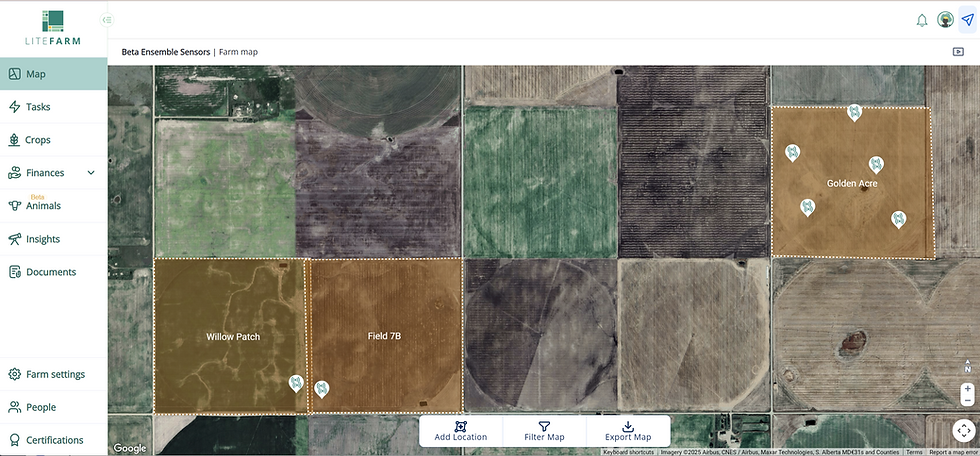What is organic agriculture?
- Larisse Cavalcante
- Feb 16, 2024
- 3 min read
In our recent post about agroecology, we used the term “organic agriculture”. While it might be familiar to many of you, there can be a lot of confusion between the various types of sustainable farming. We aim today to delve deeper into the concept of organic agriculture, emphasizing its history and benefits.
Conventional agriculture exerts numerous adverse effects on the environment and human health: agrochemicals contaminate and erode the soil, diminish biodiversity, and pollute water bodies; they contribute to climate change, requiring substantial amounts of fossil fuels for their production; and they pose risks to farmers' health as some of them have been shown to be carcinogenic. In contrast, the environmental impact of organic production is much lower and it safeguards human health.
In practical terms, organic farming is a method of growing food without the use of synthetic inputs, such as synthetic fertilizers, pesticides, veterinary drugs (e.g. antibiotics, hormones and sedatives) or genetically modified organisms (GMO). Therefore, only non-synthetic fertilizers such as compost, animal manure and cover crops are allowed. And several examples of pest control methods used by organic farmers include: diversification practices (e.g. crop rotations and trap crops); natural predators (e.g. ladybugs); natural pesticides (e.g. organic neem oil); and physical barriers (e.g. row covers and vegetation buffers).
Agriculture without the use of synthetic inputs has been practiced for thousands of years. However, in the early 1900s, the emergence of industrial agriculture — heavily dependent on the use of synthetic fertilizers and pesticides — resulted in an ever-growing concern around its impacts on the environment and human health. This concern was the initial spark of what became known as the organic movement, whose history has been influenced by various farmers, scientists and institutions.

Agronomist exploring an organic farm in Southern Brazil. Photo credit: Larisse Cavalcante.
The term “organic farming” was coined in 1940 by the English agronomist Lord Northbourne, and derived from the idea of the farm as an organism. Yet one year earlier, Lady Eve Balfour, an English farmer and educator, had already launched the Haughley Experiment — which was the first comparison between organic and conventional farming. Among a multitude of results, she found that organic practices did not compromise the overall yield of the farm. Another critical figure in the development of organic farming practices was Albert Howard. Howard was an English botanist who worked for many years in India. In 1940, he published An Agricultural Testament, in which he promoted a series of organic techniques that he had learned from Indian farmers, many of which had been practiced for generations.
With the publishing of Rachel Carson’s Silent Spring in 1962, which called attention to the impacts of DDT — a widely used pesticide — on the environment and human health, there was a dramatic rise in concern around the environment and our impacts on it. In the 1970s, this increasing global concern about the environmental damage caused by agrochemicals drew even more attention to organic agriculture as an alternative and less impactful means to grow food. The International Federation of Organic Agriculture Movements (IFOAM – Organics International) was founded in 1972. In the following decades, both farmers and consumers began pressuring governments around the world to establish legislation and certification standards for organic farming.
To qualify as organic, a product must pass a certification process. Certified products may enjoy broader market access and potentially command a premium price. The steps required to get certified vary greatly depending on the country and certification process — a theme we will explore in future posts. In general, however, obtaining certification is labor-intensive, demanding extensive record-keeping and documentation. This process, crucial for ensuring crops are grown according to organic principles, can present a significant barrier, particularly for smallholder farmers. Consequently, some farmers may opt to practice organic methods without official certification for various reasons: they may have established strong enough relationships with their customers to forgo the need for certification to sell at premium prices; others may be motivated by environmental concerns, while some may have health considerations that necessitate the use of organic practices.
At LiteFarm we don’t think the organic certification process should be a barrier to becoming certified organic. That’s why LiteFarm generates organic certification documents based on the information producers generate on the platform while running their operations. We export that data in a convenient format to share with certifiers and give farmers the power to choose who they share it with. Partnering certifiers can even request a supplemental survey of their members directly through LiteFarm. These features make LiteFarm a one-stop location for pursuing organic certification in many countries.

Organic farming in Southern Brazil. Photo credit: Larisse Cavalcante.
LiteFarm is proud to support organic agriculture, as well as other forms of sustainable farming. Stay tuned to learn more about the organic certification process and how we work with producers and certifiers to expedite their processes. Follow us on LinkedIn and Facebook to see the latest news from the LiteFarm Community.
Happy farming!
The LiteFarm team



Comments